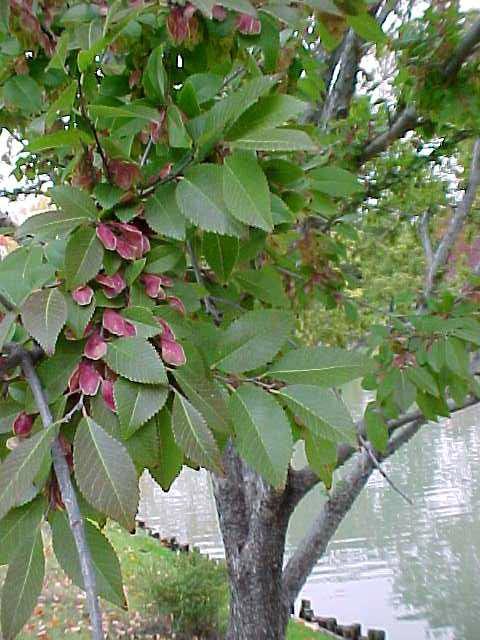Chinese Elm (Ulmus Parvifolia ‘Dynasty’)
Chinese Elm
Ulmus parvifolia, commonly called Chinese elm or lacebark elm, is a medium-sized deciduous tree that typically grows to 40-50’ (less frequently to 70’) tall with a rounded crown and long pendulous branching. It is native to China, Korea and Japan. It is noted for its excellent foliage, multi-colored bark, rapid growth and good resistance to Dutch elm disease. Insignificant, small, reddish-green flowers appear in late summer. Flowers give way to single-seeded wafer-like samaras (each tiny seed is surrounded by a flattened circular papery wing) that mature in fall. Elliptic to ovate, shiny dark green leaves (to 3” long) have small teeth. Leaves typically turn an undistinguished dull yellow in fall, but sometimes produce more interesting yellows or reddish-purples. One of the most ornamental features of this tree is its mottled bark. On mature trees, bark flakes to reveal patches of gray, cream, orange, brown and green.
Genus name comes from the Latin name.
Specific epithet means small leaf in reference to the small leaves of this species.
‘Dynasty’ is a fast-growing, vase-shaped cultivar with a small rounded crown. Typically grows 20-40′ tall, but may reach 60′ in ideal growing conditions.

Grow in average, medium moisture, well-drained soils in full sun. Tolerant of light shade. Prefers rich, moist loams. Adapts to a variety of different soils and tolerates both wet and dry sites. Generally tolerant of urban conditions.
| Hardiness zone | 5 - 9 |
| Sun light | Full Sun |
| Water | Dry To Medium |
| Maintenance | Low |
Chinese elm has good resistance to Dutch elm disease, a fatal fungal disease spread by airborne bark beetles. It also has good resistance to Japanese beetle and elm leaf beetle. Occasional disease problems include wilts, rots, cankers and leaf spots. Branches tend to break when stressed with snow, ice or wind. This species should not be confused with the much inferior Siberian elm, Ulmus pumila, which is often referred to as Chinese elm.
Medium sized shade tree or street tree. Good for urban areas.
| Common name | Chinese Elm |
| Botanical name | Ulmus Parvifolia 'Dynasty' |
| Plant type | Tree |
| Family | Ulmaceae |
| Hardiness zone | 5 - 9 |
| Water | Dry To Medium |
| Maintenance | Low |
| Flower color | Green |
| Flowering period | April |
| Height | 20 - 30 Ft. |
| Width | 20 - 30 Ft. |